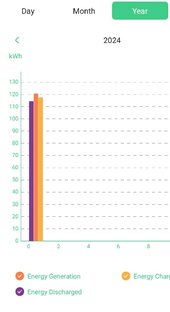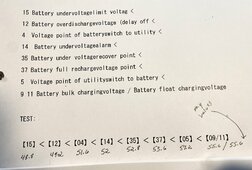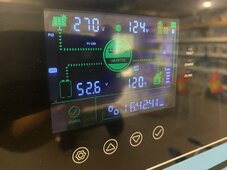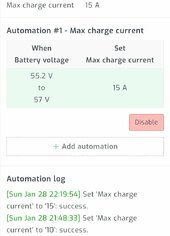CaliSunHarvester
Solar Enthusiast
So what is the resolution?
Just have them at different fake SOCs?
Or disassemble everything every 6 months and manually balance them to the top with a charger?
As I sometimes mention, I have this other 24V system with 3 batteries of 24V/200Ah each. They have 200A BMS, so they can deliver as much as a 48V/100A rack battery.
But I have 0 knowledge what's going in inside. As the 3 are hooked up in parallel, I have 0 knowledge of actual voltage, SOC, number of cycles etc.
I just saw this morning that the battery bank had 27.2V while under charge (which means I would measure 27V at the contacts), and I figured, "good, I can charge my Prius twice"
No knowledge, no worries!!
Just have them at different fake SOCs?
Or disassemble everything every 6 months and manually balance them to the top with a charger?
As I sometimes mention, I have this other 24V system with 3 batteries of 24V/200Ah each. They have 200A BMS, so they can deliver as much as a 48V/100A rack battery.
But I have 0 knowledge what's going in inside. As the 3 are hooked up in parallel, I have 0 knowledge of actual voltage, SOC, number of cycles etc.
I just saw this morning that the battery bank had 27.2V while under charge (which means I would measure 27V at the contacts), and I figured, "good, I can charge my Prius twice"
No knowledge, no worries!!









